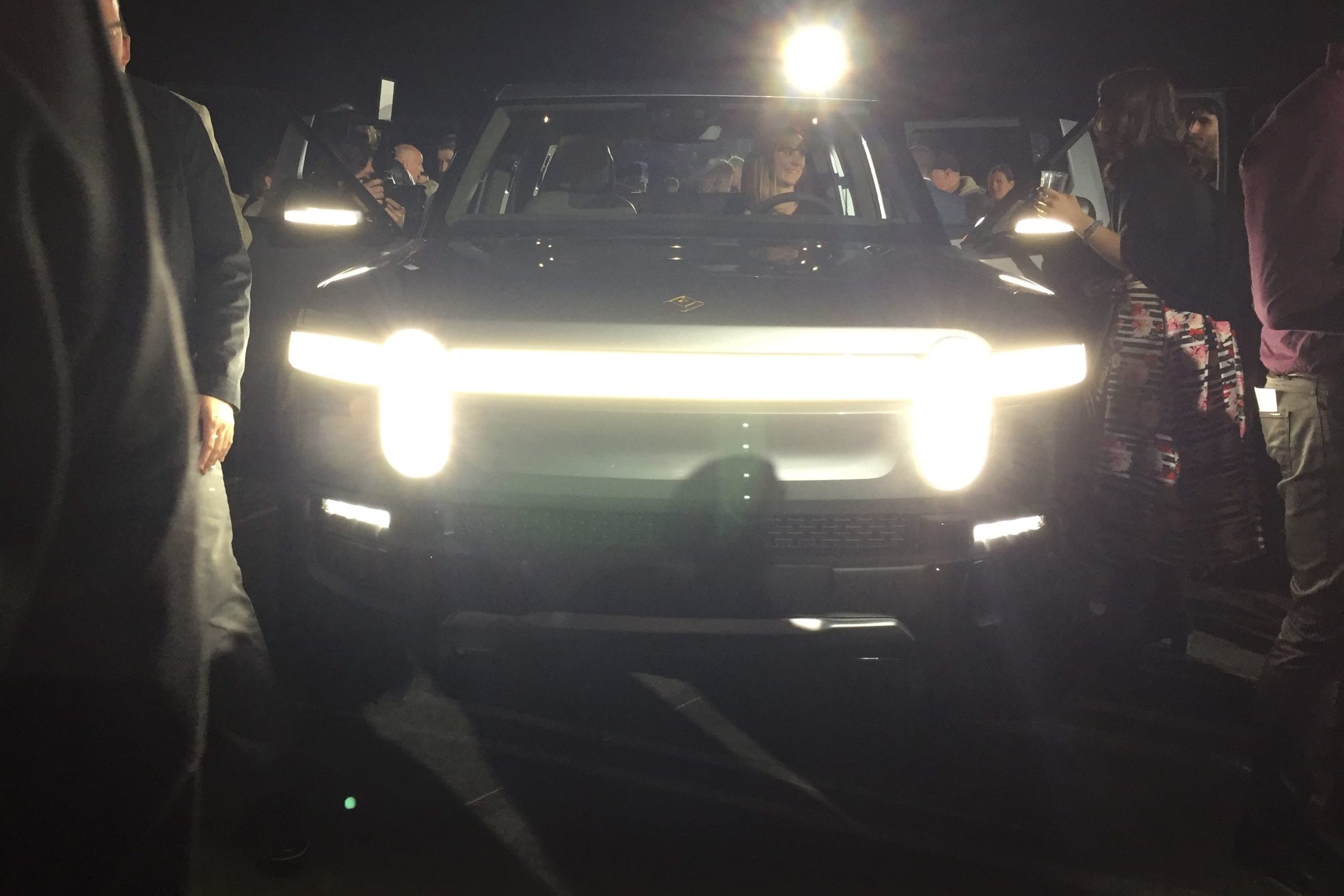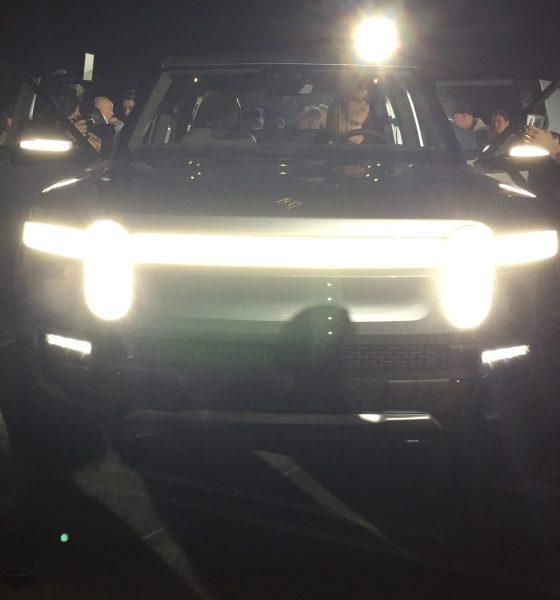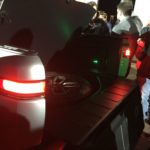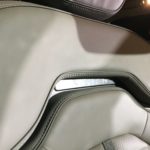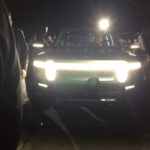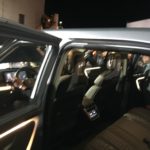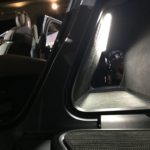On the grounds of the historic Griffith Observatory in Los Angeles on Monday night, Rivian, a US-based electric vehicle startup, unveiled its first vehicle to a small, quaint crowd. Food was served, and calming music befitting a Four Seasons Hotel serenaded members of the press and the event’s guests, which included social media influencers and even a number of celebrities from Hollywood. Amidst the chill vibe, though, a sense of excitement permeated the air, thanks to the centerpiece of the night’s event — a futuristic, rugged, vehicle that has the potential to disrupt the US’ highly lucrative pickup truck market.
The Rivian R1T, with its large off-road wheels, imposing stance, and adventure-themed design flourishes almost stood as a stark contrast to the unveiling’s quaint atmosphere. Quite unlike Tesla, whose unveiling events feature large numbers of people and a modern, high-energy setting, Rivian’s unveiling event for its R1T pickup truck was composed and almost restrained. The enthusiasm in the air, though, was palpable.
The R1T could be described as a luxury adventure vehicle. The pickup truck is designed from the ground up to be at home both on the pavement and off the beaten path, but the vehicle maintains an air of sophistication nonetheless. While Rivian did not allow test drives during the event, the truck on display was very well put together. It was evident that a lot of thought went into the vehicle’s interior design, from its luxurious seats, its all digital instrument panel, and its unique floormats which were made from a lightweight, thin material that almost seemed like carbon fiber.
- Rivian CEO RJ Scaringe presents the R1T all-electric pickup truck. [Credit: Teslarati]
- The Rivian R1T’s interior is plush with technology. [Credit: Teslarati]
- The Rivian R1T features a functional bed with a number of clever features. [Credit: Teslarati]
- The luxury aspect of the Rivian R1T is reflected in the vehicle’s seats, which are made of premium materials. [Credit: Teslarati]
Rivian unveils its R1T all-electric pickup truck. [Credit: Teslarati]
Speaking before an audience comprised mainly of Rivian employees, select media and even some A-list celebs, CEO RJ Scaringe presented the R1T’s key features and capabilities. Rivian confirmed that they are using 2170 battery cells for the R1T pickup truck and the R1S SUV, which is set to be unveiled on Tuesday. The company noted that it would not be producing its own batteries at this stage of its operations, though their long-term strategy also includes the possibility of establishing a dedicated battery manufacturing facility like Tesla’s Gigafactory 1. Rivian aims to be a battery manufacturer like Tesla eventually, and it aims to license and sell its cells to other manufacturers in the future.
There’s no question that the vehicle’s target demographic are buyers who love luxury and the outdoors. As such, we were impressed by some of the pickup truck’s features that are aimed at making the ownership experience effortless. Among these were its automatic liftgate, and a thin, black lining that automatically protects cargo on the bed with the press of a button. We also found some of the R1T’s quirks — such as headlights that double as a green progress bar when the vehicle is charging — clever and fun. Finally, we liked the vehicle’s storage options, from its “gear tunnel” to its 11.7 cubic foot (330 liter) frunk, which is larger than those found in other premium electric vehicles like the Tesla Model S and Model X.
Rivian noted that it intends to develop self-driving capabilities for the R1T. As such, the truck is equipped with the hardware necessary to make this a reality. These include a suite of cameras, ultrasonic sensors, radar, high-precision GPS technologies, and even a LiDAR. In the future, the company notes that the vehicle should be able to meet its driver at the end of a hiking trail or river run. The company did not provide details as to how it intends to accomplish this, though considering its focus on the outdoors, there is a good possibility that Rivian could be mapping popular trails across the country.
- The Rivian R1T has a distinct front fascia. [Credit: Teslarati]
- Rivian’s “skateboard” for the R1T, which holds the pickup truck’s 2170 battery modules. [Credit: Teslarati]
- The Rivian R1T all-electric pickup truck has a seating capacity of 5. [Credit: Teslarati]
- The Rivian R1T’s “gear tunnel,” which is specifically designed to store items like fishing roads and golf clubs. [Credit: Teslarati]
Rivian unveils its R1T all-electric pickup truck. [Credit: Teslarati]
After operating in stealth for the most part of the past decade, Rivian has decided to come out with a bang, renting out one of the most historic landmarks in LA to unveil a vehicle that could very well be equally historic if produced and ramped successfully. The R1T starts at $69,000 for its base trim, which is equipped with four electric motors and a 230+ mile range from its 105 kWh battery. The all-electric truck is still pricier than mainstays of the US’ pickup truck market such as the Ford F-150, which starts at a more affordable $29,650. That said, Rivian CEO RJ Scaringe made it clear that the company is going for a very specific niche with its first two vehicles — those that love the outdoors, and those that love luxury. For this niche of buyers, the Rivian R1T might just be the perfect vehicle.
Production of the Rivian R1T is expected to begin in 2020 in the company’s factory in Normal, Il, which it acquired from Mitsubishi in January 2017 for $16 million. The company plans to manufacture the pickup truck’s higher-end variants first, followed by the R1T’s $69,000 version within 12 months from the start of production. Rivian has also started accepting pre-orders for the R1T, with interested buyers being required to place a refundable deposit of $1,000 for the vehicle.
With assistance from Christian Prenzler.

News
Tesla is not sparing any expense in ensuring the Cybercab is safe
Images shared by the longtime watcher showed 16 Cybercab prototypes parked near Giga Texas’ dedicated crash test facility.

The Tesla Cybercab could very well be the safest taxi on the road when it is released and deployed for public use. This was, at least, hinted at by the intensive safety tests that Tesla seems to be putting the autonomous two-seater through at its Giga Texas crash test facility.
Intensive crash tests
As per recent images from longtime Giga Texas watcher and drone operator Joe Tegtmeyer, Tesla seems to be very busy crash testing Cybercab units. Images shared by the longtime watcher showed 16 Cybercab prototypes parked near Giga Texas’ dedicated crash test facility just before the holidays.
Tegtmeyer’s aerial photos showed the prototypes clustered outside the factory’s testing building. Some uncovered Cybercabs showed notable damage and one even had its airbags engaged. With Cybercab production expected to start in about 130 days, it appears that Tesla is very busy ensuring that its autonomous two-seater ends up becoming the safest taxi on public roads.
Prioritizing safety
With no human driver controls, the Cybercab demands exceptional active and passive safety systems to protect occupants in any scenario. Considering Tesla’s reputation, it is then understandable that the company seems to be sparing no expense in ensuring that the Cybercab is as safe as possible.
Tesla’s focus on safety was recently highlighted when the Cybertruck achieved a Top Safety Pick+ rating from the Insurance Institute for Highway Safety (IIHS). This was a notable victory for the Cybertruck as critics have long claimed that the vehicle will be one of, if not the, most unsafe truck on the road due to its appearance. The vehicle’s Top Safety Pick+ rating, if any, simply proved that Tesla never neglects to make its cars as safe as possible, and that definitely includes the Cybercab.
Elon Musk
Tesla’s Elon Musk gives timeframe for FSD’s release in UAE
Provided that Musk’s timeframe proves accurate, FSD would be able to start saturating the Middle East, starting with the UAE, next year.

Tesla CEO Elon Musk stated on Monday that Full Self-Driving (Supervised) could launch in the United Arab Emirates (UAE) as soon as January 2026.
Provided that Musk’s timeframe proves accurate, FSD would be able to start saturating the Middle East, starting with the UAE, next year.
Musk’s estimate
In a post on X, UAE-based political analyst Ahmed Sharif Al Amiri asked Musk when FSD would arrive in the country, quoting an earlier post where the CEO encouraged users to try out FSD for themselves. Musk responded directly to the analyst’s inquiry.
“Hopefully, next month,” Musk wrote. The exchange attracted a lot of attention, with numerous X users sharing their excitement at the idea of FSD being brought to a new country. FSD (Supervised), after all, would likely allow hands-off highway driving, urban navigation, and parking under driver oversight in traffic-heavy cities such as Dubai and Abu Dhabi.
Musk’s comments about FSD’s arrival in the UAE were posted following his visit to the Middle Eastern country. Over the weekend, images were shared online of Musk meeting with UAE Defense Minister, Deputy Prime Minister, and Dubai Crown Prince HH Sheikh Hamdan bin Mohammed. Musk also posted a supportive message about the country, posting “UAE rocks!” on X.
FSD recognition
FSD has been getting quite a lot of support from foreign media outlets. FSD (Supervised) earned high marks from Germany’s largest car magazine, Auto Bild, during a test in Berlin’s challenging urban environment. The demonstration highlighted the system’s ability to handle dense traffic, construction sites, pedestrian crossings, and narrow streets with smooth, confident decision-making.
Journalist Robin Hornig was particularly struck by FSD’s superior perception and tireless attention, stating: “Tesla FSD Supervised sees more than I do. It doesn’t get distracted and never gets tired. I like to think I’m a good driver, but I can’t match this system’s all-around vision. It’s at its best when both work together: my experience and the Tesla’s constant attention.” Only one intervention was needed when the system misread a route, showcasing its maturity while relying on vision-only sensors and over-the-air learning.
News
Tesla quietly flexes FSD’s reliability amid Waymo blackout in San Francisco
“Tesla Robotaxis were unaffected by the SF power outage,” Musk wrote in his post.

Tesla highlighted its Full Self-Driving (Supervised) system’s robustness this week by sharing dashcam footage of a vehicle in FSD navigating pitch-black San Francisco streets during the city’s widespread power outage.
While Waymo’s robotaxis stalled and caused traffic jams, Tesla’s vision-only approach kept operating seamlessly without remote intervention. Elon Musk amplified the clip, highlighting the contrast between the two systems.
Tesla FSD handles total darkness
The @Tesla_AI account posted a video from a Model Y operating on FSD during San Francisco’s blackout. As could be seen in the video, streetlights, traffic signals, and surrounding illumination were completely out, but the vehicle drove confidently and cautiously, just like a proficient human driver.
Musk reposted the clip, adding context to reports of Waymo vehicles struggling in the same conditions. “Tesla Robotaxis were unaffected by the SF power outage,” Musk wrote in his post.
Musk and the Tesla AI team’s posts highlight the idea that FSD operates a lot like any experienced human driver. Since the system does not rely on a variety of sensors and a complicated symphony of factors, vehicles could technically navigate challenging circumstances as they emerge. This definitely seemed to be the case in San Francisco.
Waymo’s blackout struggles
Waymo faced scrutiny after multiple self-driving Jaguar I-PACE taxis stopped functioning during the blackout, blocking lanes, causing traffic jams, and requiring manual retrieval. Videos shared during the power outage showed fleets of Waymo vehicles just stopping in the middle of the road, seemingly confused about what to do when the lights go out.
In a comment, Waymo stated that its vehicles treat nonfunctional signals as four-way stops, but “the sheer scale of the outage led to instances where vehicles remained stationary longer than usual to confirm the state of the affected intersections. This contributed to traffic friction during the height of the congestion.”
A company spokesperson also shared some thoughts about the incidents. “Yesterday’s power outage was a widespread event that caused gridlock across San Francisco, with non-functioning traffic signals and transit disruptions. While the failure of the utility infrastructure was significant, we are committed to ensuring our technology adjusts to traffic flow during such events,” the Waymo spokesperson stated, adding that it is “focused on rapidly integrating the lessons learned from this event, and are committed to earning and maintaining the trust of the communities we serve every day.”
